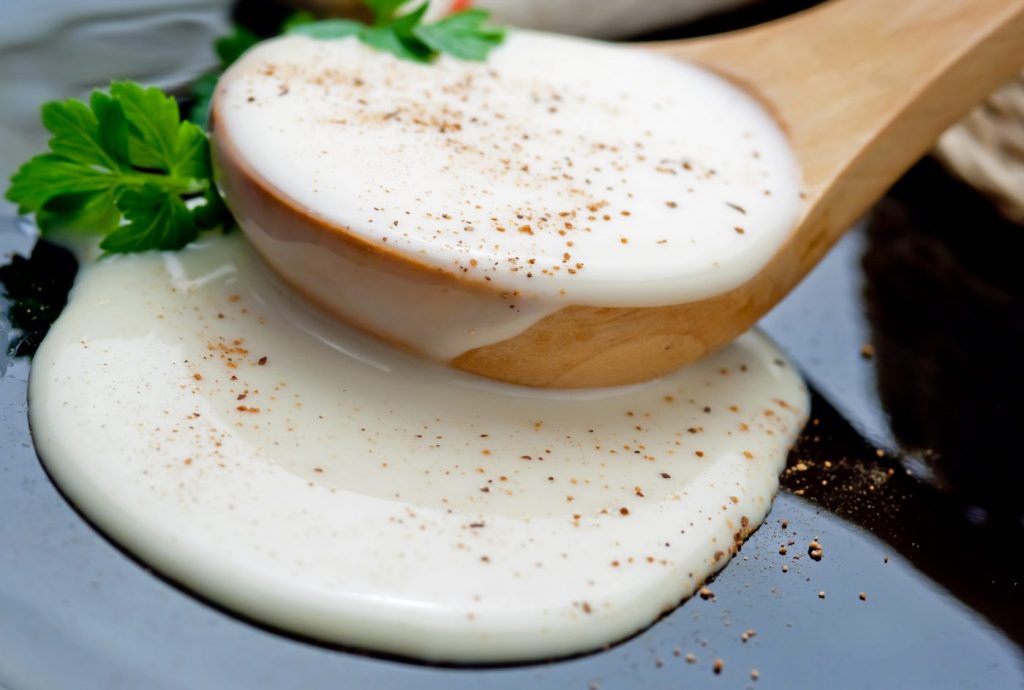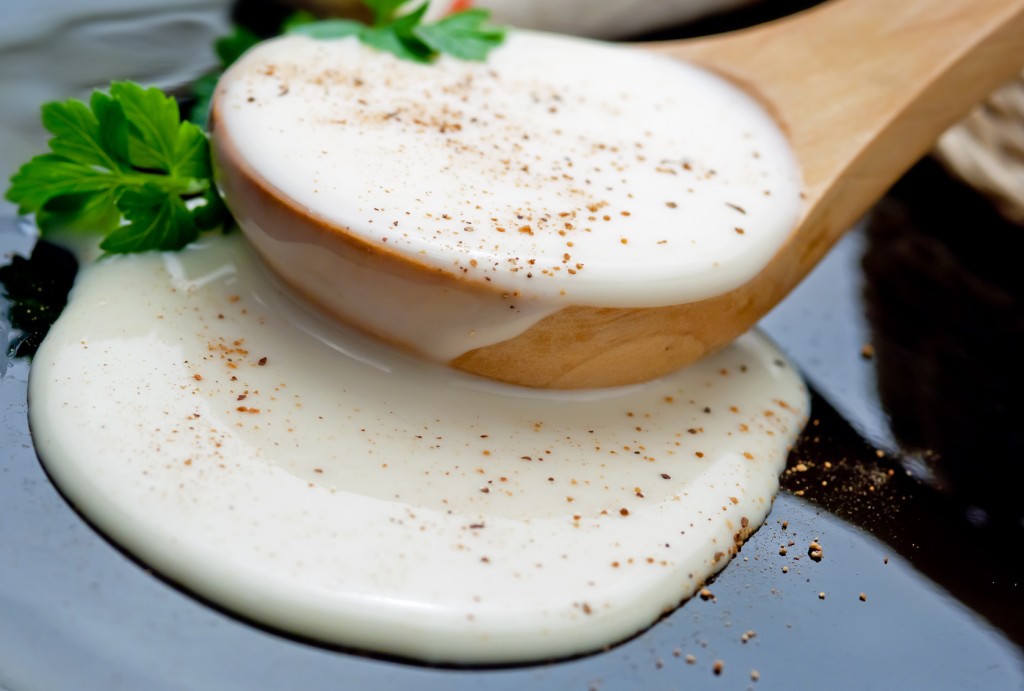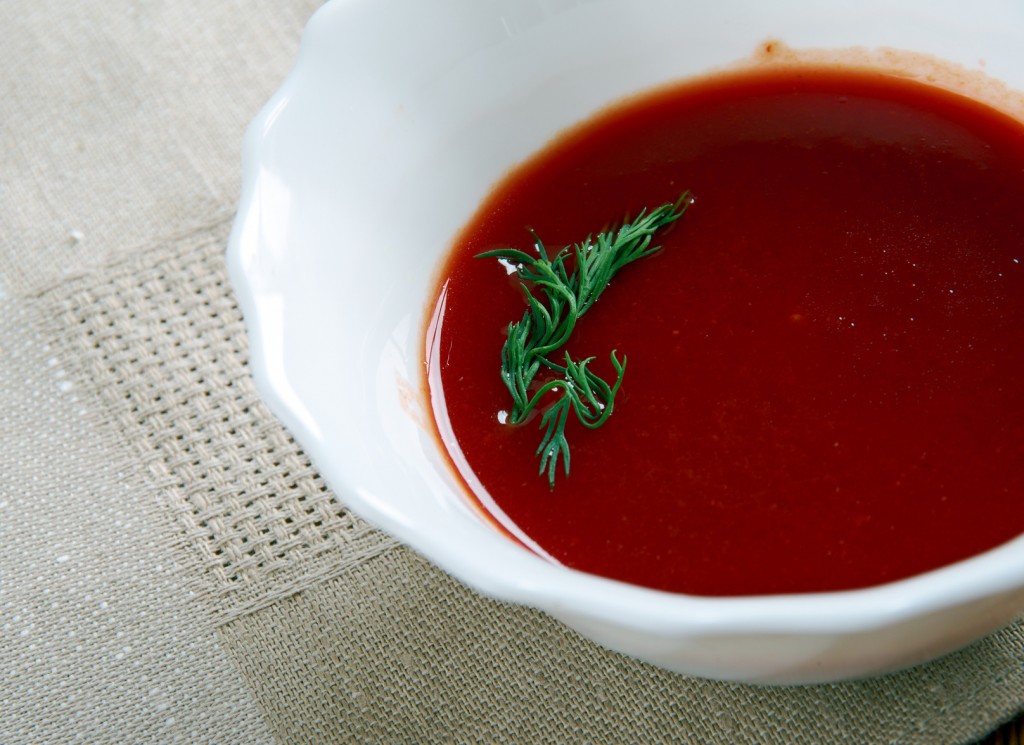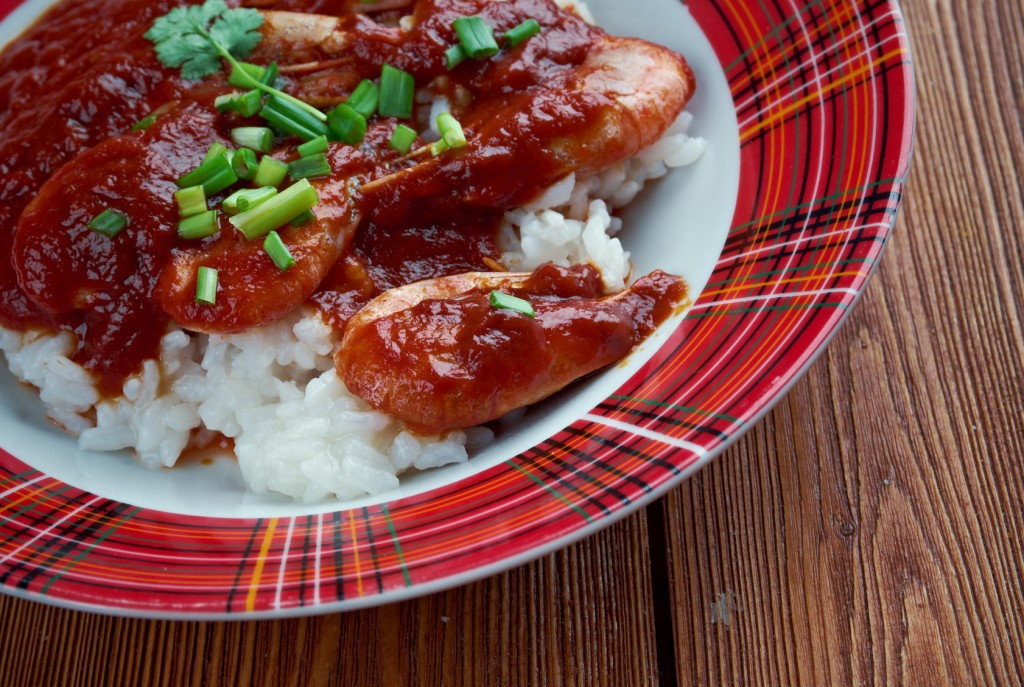Before refrigeration, sauces originated as a way to hide the taste of food that was staring to spoil. Then people started tinkering with them, and things got a lot tastier. Here are the five sauces that food historians say are the source of all other sauces that followed.
FLAVOR SAVOR
A skilled saucier (“sauce cook”) can create thousands of sauces, many with similar ingredients. In the 19th century, Marie-Antoine Carême (1784–1833), the French chef credited as the father of gourmet, or haute cuisine, classified all sauces under four categories that became known as the “Mother Sauces.” (His other claim to fame: inventing the chef’s hat.) Carême’s four sauces were updated a century later by another legendary French chef, Auguste Escoffier (1846–1935), who modernized French cuisine in the late 1800s. Escoffier reclassified one of Carême’s sauces, and then added another to get the five Mother Sauces that chefs recognize today.
1) BÉCHAMEL (White Sauce)
Béchamel (BEH-shah-mehl) is the most common and easiest to prepare of the Mother Sauces. Named for the man who perfected it, King Louis XIV’s steward Louis de Béchamel (1603–1703), this sauce is a butter-roux (flour and butter, combined to a paste over low heat) mixed with milk. It can be thickened by adding more butter and flour. Béchamel is the base of most cheese sauces, including the cheesy part of macaroni and cheese, as well as Alfredo, and the cheese sauce used in Welsh Rarebit.
2) VELOUTÉ (“Velvety”)
To make a velouté (veh-loo-TAY), start with a white soup stock (vegetables and meat cooked in water, then strained out), thicken it by adding roux, then let it simmer. Chicken velouté is the most common, but veloutés are commonly made with veal or fish stock. If a chef adds egg yolks, the result is an allemande, one of Carême’s four original sauces, which Escoffier reclassified. Chefs recommend pairing a velouté with a dish made from the same thing; chicken velouté should be used on chicken, veal velouté on veal, and so on. The most common veloute: white wine sauce.
3) ESPAGNOLE (Brown Sauce)
Espagnole (es-pah-NYOHL) is prepared like velouté, but with carmelized meat and vegetables to give the sauce a brown color. Sometimes tomato paste or puree is used, but an espagnole is typically made without tomatoes. The sauce gets its thickness by reduction: boiling it quickly so the water evaporates but the flavor stays concentrated. Common espagnoles: Madeira sauce, Sauce Diane, and demi-glace, made by adding red wine to the recipe, then reducing the sauce until it is thick enough to coat a spoon.
4) HOLLANDAISE
A rich, creamy yellow sauce made of clarified butter, egg yolk, and lemon juice, hollandaise is the most difficult of the Mother Sauces to make because it’s an emulsion, meaning the ingredients are naturally inclined to separate. The secret to making a good hollandaise is to pour the butter slowly into the egg yolks while quickly stirring the mixture with a whisk. Chefs use clarified butter because whole butter contains milk solids which tend to break the emulsion. Hollandaise is the key ingredient in Eggs Benedict, and it’s also the sauce in Filet Oscar, which is a filet mignon topped with crab meat and asparagus. Other emulsions similar to Hollandaise include mayonnaise, tartar sauce, and Béarnaise.
5) TOMATE (Tomato)
Auguste Escoffier added sauce tomate as the fifth Mother Sauce. In addition to tomatoes, his recipe calls for salt pork, carrots, onions, butter, veal stock, garlic, roux, and a few seasonings, but a simple tomato sauce doesn’t need much more than tomatoes and seasonings. As with other sauces, the roux in a tomato sauce is a thickener, but the flesh of a tomato is hearty enough that a thickener isn’t always necessary. One of the easiest sauces to create, tomato sauce is extremely versatile and can be paired with almost any meat, fish, or pasta. It’s also easy to freeze and store, making it one of the most-used sauces in the culinary world. Common tomato sauces: Creole and Provençale, as well as Italian Carbonara, Pomodoro, and Marinara sauces.













